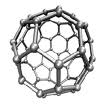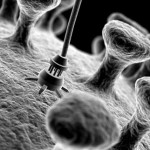 In 2010, the U.S. Supreme Court issued a closely-watched decision on patentable subject matter under § 101 of the Patent Act, Bilski v. Kappos, 130 S. Ct. 3218 (2010). The Court has now granted cert in another case on patentable subject matter – Prometheus Laboratories, Inc. v. Mayo Collaborative Services, in which the Federal Circuit Court of Appeals held in 2010 that certain medical inventions met the requirements of patentable subject matter in § 101. Prometheus was the sole and exclusive licensee of certain patents that claim methods for determining the optimal dosage of thiopurine drugs used to treat gastrointestinal and non-gastrointestinal autoimmune diseases. When Prometheus sued Mayo for patent infringement, Mayo filed a motion for summary judgment of invalidity, arguing that the patents in question were invalid because they claimed subject matter unpatentable under the Patent Act, 35 U.S.C. § 101. Specifically, Mayo argued that the patents impermissibly claimed natural phenomena – i.e. the correlations between drug metabolite levels and efficacy and toxicity – and not patentable inventions. In 2008, the district court granted Mayo’s motion for summary judgment of invalidity.
In 2010, the U.S. Supreme Court issued a closely-watched decision on patentable subject matter under § 101 of the Patent Act, Bilski v. Kappos, 130 S. Ct. 3218 (2010). The Court has now granted cert in another case on patentable subject matter – Prometheus Laboratories, Inc. v. Mayo Collaborative Services, in which the Federal Circuit Court of Appeals held in 2010 that certain medical inventions met the requirements of patentable subject matter in § 101. Prometheus was the sole and exclusive licensee of certain patents that claim methods for determining the optimal dosage of thiopurine drugs used to treat gastrointestinal and non-gastrointestinal autoimmune diseases. When Prometheus sued Mayo for patent infringement, Mayo filed a motion for summary judgment of invalidity, arguing that the patents in question were invalid because they claimed subject matter unpatentable under the Patent Act, 35 U.S.C. § 101. Specifically, Mayo argued that the patents impermissibly claimed natural phenomena – i.e. the correlations between drug metabolite levels and efficacy and toxicity – and not patentable inventions. In 2008, the district court granted Mayo’s motion for summary judgment of invalidity.
In 2009, the Federal Circuit reversed and upheld the patents under the “machine or transformation” test (the sole test at the time). The U.S. Supreme Court then decided Bilski v. Kappos, which we discussed in this blog a year ago. In Bilski, the Court rejected the “machine or transformation” test as the definitive test of patentability, relegating that test to one factor – “a useful and important clue, an investigative tool, for determining whether some claimed inventions are processes under § 101.” 130 S. Ct. at 3227. The Supreme Court then granted Mayo’s petition for certiorari in the Prometheus lawsuit, vacated the Federal Circuit’s 2009 decision, and remanded the case for further proceedings consistent with Bilski. The Federal Circuit decided the case on briefs, without further oral argument, and held, in light of Bilski, that Prometheus had recited patentable subject matter under § 101. 628 F.3d 1347 (Fed. Cir. 2010). Once again, the Supreme Court granted certiorari, and the Court will hear the case in the term that begins in October, 2011.
Although the Supreme Court has consistently construed § 101 broadly, the section does have limits. The Federal Circuit described one limitation as follows:
The Supreme Court has . . . established that while a law of nature, natural phenomenon, or abstract idea cannot be patented, “an application of a law of nature or mathematical formula to a known structure or process may well be deserving of patent protection.”
628 F.3d at 1354 (quoting Bilski, 130 S.Ct. at 3230) (emphasis added). This is the core of the issue to be decided by the Supreme Court.
As my co-blogger, Eric Laury, now J.D., stated in his earlier post about Bilski, “biotech and nanotech patents are not theoretically involved with . . . a machine nor do they transform matter.” Bilski was good news for the bionanotech industry, but the case left loose ends. Now it appears that the Supreme Court will take another step in the direction of defining patentable subject matter for the brave new world of modern inventions. Nanotech firms, particularly those working in the area of biotechnology, should be closely watching the Supreme Court’s next move.
Mayo presented the following question in its cert petition: “Whether 35 U.S.C. § 101 is satisfied by a patent claim that covers observed correlations between blood test results and patient health, so that the claim effectively preempts all uses of the naturally occurring correlations, simply because well-known methods used to administer prescription drugs and test blood may involve ‘transformations’ of body chemistry.”
I suspect the fact that the Court granted cert a second time in Mayo v. Prometheus may not be a good sign for Prometheus. It may mean that the Court had been expecting the Federal Circuit to reach the opposite result and wants to set the record straight. On the other hand, the Court may further refine its definition of patentable subject matter under § 101 in a way that may achieve middle ground between innovation and patent protection.
The Federal Circuit’s 2010 decision may be accessed at
http://www.cafc.uscourts.gov/images/stories/opinions-orders/08-1403.pdf
 In a June 9, 2011, memorandum to the heads of U.S. executive departments and agencies, entitled Policy Principles for the U.S. Decision-Making Concerning Regulation and Oversight of Applications of Nanotechnology and Nanomaterials, the White House confirmed its commitment to a “science-based” approach to health and safety matters related to nanotechnology. The memorandum issued from the Office of Science and Technology Policy, the Office of Management and Budget, and the Office of the U.S. Trade Representative. The memorandum described its approach as
In a June 9, 2011, memorandum to the heads of U.S. executive departments and agencies, entitled Policy Principles for the U.S. Decision-Making Concerning Regulation and Oversight of Applications of Nanotechnology and Nanomaterials, the White House confirmed its commitment to a “science-based” approach to health and safety matters related to nanotechnology. The memorandum issued from the Office of Science and Technology Policy, the Office of Management and Budget, and the Office of the U.S. Trade Representative. The memorandum described its approach as Listening to the speakers at the American Bar Association section webinar on the subject of “Nano Governance: The Current State of Federal, State, and International Regulation,” discussed in
Listening to the speakers at the American Bar Association section webinar on the subject of “Nano Governance: The Current State of Federal, State, and International Regulation,” discussed in  On November 22, 2010, EPA submitted a proposed rule under Section 8(a) of TSCA to the Office of Management and Budget for its review. The proposed rule includes reporting requirements for manufacturers of nanoscale materials and could be published in the Federal Register for public comment in December.
On November 22, 2010, EPA submitted a proposed rule under Section 8(a) of TSCA to the Office of Management and Budget for its review. The proposed rule includes reporting requirements for manufacturers of nanoscale materials and could be published in the Federal Register for public comment in December.


